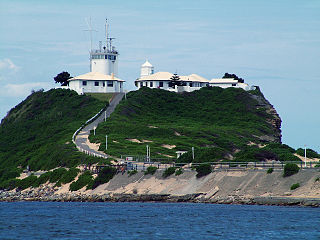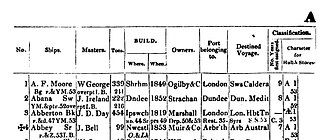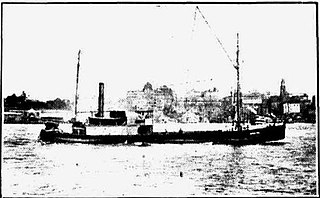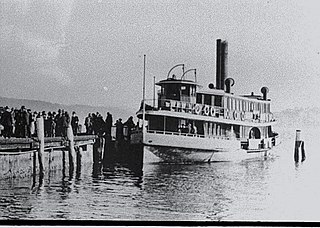
New South Wales is a state on the east coast of Australia. It borders Queensland to the north, Victoria to the south, and South Australia to the west. Its coast borders the Coral and Tasman Seas to the east. The Australian Capital Territory is an enclave within the state. New South Wales' state capital is Sydney, which is also Australia's most populous city. In June 2020, the population of New South Wales was over 8.1 million, making it Australia's most populous state. Just under two-thirds of the state's population, 5.3 million, live in the Greater Sydney area. The demonym for inhabitants of New South Wales is New South Welshmen.

The Newcastle metropolitan area is the second most populated area in the Australian state of New South Wales. It includes the Newcastle and Lake Macquarie local government areas. It is the hub of the Greater Newcastle area, which includes most parts of the local government areas of City of Newcastle, City of Lake Macquarie, City of Cessnock, City of Maitland and Port Stephens Council.

The Australian state of New South Wales has an extensive network of railways, which were integral to the growth and development of the state. The vast majority of railway lines were government built and operated, but there were also several private railways, some of which operate to this day.
The NSW Cup, currently known as the Knock-On Effect NSW Cup for sponsorship reasons, is a rugby league competition for clubs in New South Wales. The competition has a history dating back to the NSWRFL's origins in 1908, starting off as a reserve grade competition, and is now the premier open age competition in the state. The NSW Cup was the Reserve Grade/Presidents Cup/First Division from 1908 until 2002, and the NSWRL Premier League from 2003 to 2007, the New South Wales Cup from 2008 to 2015, the Intrust Super Premiership NSW from 2016 to 2018, the Canterbury Cup NSW from 2019 to 2020. The New South Wales Cup, along with the Queensland Cup, acts as a feeder competition to the National Rugby League premiership.
James Hannell was an auctioneer, publican, and Australian politician elected as a member of the New South Wales Legislative Assembly, the first Mayor of Newcastle, and the first Mayor of Wickham.

The Anglican Diocese of Newcastle in Australia is a diocese of the Anglican Church of Australia. The diocese is located in the state of New South Wales. It is centred in the city of Newcastle and extends along the state's coast from Woy Woy to Laurieton and inland to Merriwa and Murrurundi.

The SS Cawarra was a paddle-steamer that sank on 12 July 1866 in Newcastle harbour, New South Wales, Australia sending sixty people to their deaths. The sinking was one of the worst maritime disasters in Australian history.

The State Dockyard was a ship building and maintenance facility operated by the Government of New South Wales in Carrington, Newcastle, New South Wales, Australia between 1942 and 1987.
HMCS Integrity was a cutter built by the Colonial Government of New South Wales in 1804. She was the first vessel ever launched from a New South Wales dockyard and carried goods between the colony's coastal settlements of Norfolk Island, Newcastle, New South Wales, Van Diemen's Land and Port Jackson. In 1804 she took part in a series of voyages to Van Diemen's Land with the aim of founding a colony at Port Dalrymple, the site of the modern settlement of George Town, Tasmania.
Estramina, originally called Extremeña, a two-masted schooner of 102 tons, was built at Guayaquil, in the Spanish Viceroyalty of Peru, now in modern-day Ecuador, and launched on 13 October 1803. A Spanish Naval vessel, it was pierced for 12 guns but was armed with only four 4-pounders and carried a crew of 18. It was commanded by Lieutenant Mariano Isasbiribil, and engaged in hydrographical surveys.
Edwin was a ship that was wrecked near Cape Hawke, New South Wales, Australia in late June 1816.

The Wallsend branch railway line is a closed branch railway line in New South Wales, Australia. It was standard gauge and 6.1 kilometres (3.8 mi) in length. The line was privately owned and built by the Newcastle Wallsend Coal Company in the early 1860s to service their collieries, and was enabled by the passage of the Newcastle Wallsend Coal Co. Railway Act 1860 in the New South Wales Parliament. Passenger services on the line were also provided by New South Wales Government Railways from Newcastle and terminated at Wallsend Railway Station adjoining the Nelson Street level crossing.

The Abbey was a wooden brigantine that was wrecked at Crowdy Head, New South Wales in 1868.
The Acme was a wooden top sail schooner that was driven ashore at Seal Rocks, New South Wales while carrying timber from Camden Haven to Sydney under the command of Captain James Henry Jackson on the 15 July 1876. There were no casualties.
The Agnes was a wooden cutter that was wrecked when it run ashore on the New South Wales on 4 July 1865.

HMAS Koolonga was a 4,260 gross register tons cargo ship built by Sunderland Shipbuilding Company, South Dock Sunderland, England, in 1914 and bought by McIlwraith, McEacharn Line Pty Ltd, Melbourne and named SS Koolonga. She was requisitioned by the Royal Australian Navy on 6 August 1914, as a collier and supply ship. She was returned to her owners in late 1915. She was sold in 1937 to Madrigal & Company, Philippines and renamed Paz. She was scuttled during the Second World War at Sourabaya Harbour in 1942 and was later salvaged by the Imperial Japanese and renamed Hatsu Maru. While at anchor in Manila Bay, Philippines on 13 November 1944, she was attacked by United States Navy carrier aircraft and was sunk.
The Municipality of Balmain was a local government area of Sydney, New South Wales, Australia. The municipality was proclaimed in February 1860 and, with an area of 3.8 square kilometres, covered the entire peninsula of Balmain north of Callan Park and Foucart Street, including the present suburbs of Balmain, Balmain East, Birchgrove and Rozelle. The council was amalgamated with the municipalities of Leichhardt and Annandale to the south with the passing of the Local Government (Areas) Act 1948.

The Queen Bee was a wooden carvel Twin-screw steamer built in 1907 at Davistown, New South Wales, that was wrecked when she sprang a leak whilst carrying coal other general cargo between Sydney and Newcastle, New South Wales. She was lost off Barrenjoey Head, Broken Bay, New South Wales on 2 September 1922.

Kookooburra was a "K-class" ferry on Sydney Harbour. Commissioned in 1907, the timber-hulled steamer was built for Sydney Ferries Limited during the boom in cross-harbour ferry travel prior to the opening of the Sydney Harbour Bridge. She was retired from Sydney Harbour service in 1947 after which she was sent to Newcastle. She is thought to have been broken up in 1959.










